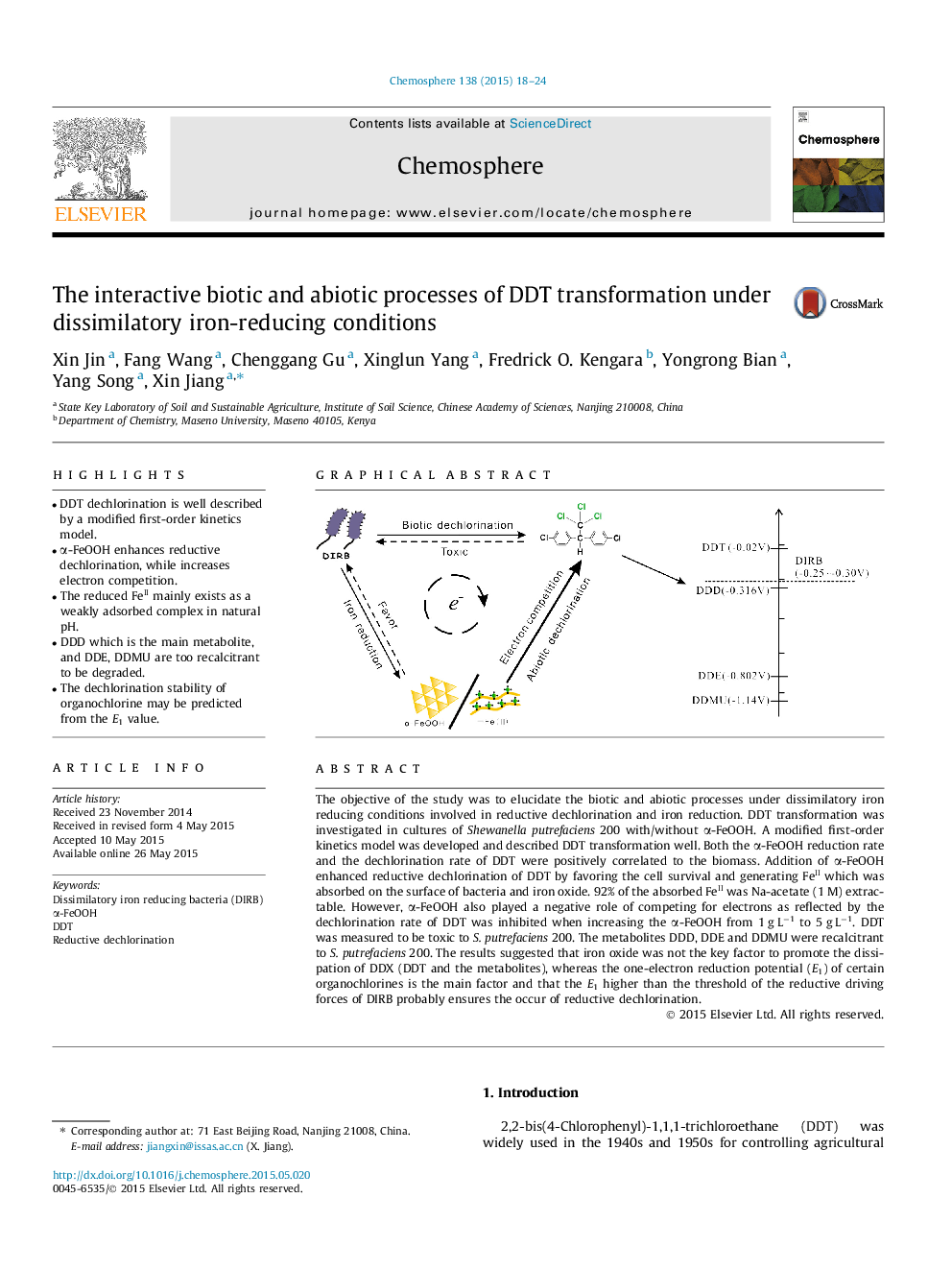| کد مقاله | کد نشریه | سال انتشار | مقاله انگلیسی | نسخه تمام متن |
|---|---|---|---|---|
| 6307403 | 1618833 | 2015 | 7 صفحه PDF | دانلود رایگان |

- DDT dechlorination is well described by a modified first-order kinetics model.
- α-FeOOH enhances reductive dechlorination, while increases electron competition.
- The reduced FeII mainly exists as a weakly adsorbed complex in natural pH.
- DDD which is the main metabolite, and DDE, DDMU are too recalcitrant to be degraded.
- The dechlorination stability of organochlorine may be predicted from the E1 value.
The objective of the study was to elucidate the biotic and abiotic processes under dissimilatory iron reducing conditions involved in reductive dechlorination and iron reduction. DDT transformation was investigated in cultures of Shewanella putrefaciens 200 with/without α-FeOOH. A modified first-order kinetics model was developed and described DDT transformation well. Both the α-FeOOH reduction rate and the dechlorination rate of DDT were positively correlated to the biomass. Addition of α-FeOOH enhanced reductive dechlorination of DDT by favoring the cell survival and generating FeII which was absorbed on the surface of bacteria and iron oxide. 92% of the absorbed FeII was Na-acetate (1 M) extractable. However, α-FeOOH also played a negative role of competing for electrons as reflected by the dechlorination rate of DDT was inhibited when increasing the α-FeOOH from 1 g Lâ1 to 5 g Lâ1. DDT was measured to be toxic to S. putrefaciens 200. The metabolites DDD, DDE and DDMU were recalcitrant to S. putrefaciens 200. The results suggested that iron oxide was not the key factor to promote the dissipation of DDX (DDT and the metabolites), whereas the one-electron reduction potential (E1) of certain organochlorines is the main factor and that the E1 higher than the threshold of the reductive driving forces of DIRB probably ensures the occur of reductive dechlorination.
124
Journal: Chemosphere - Volume 138, November 2015, Pages 18-24